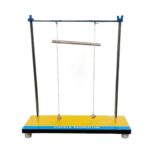- Pick up from the Samtech Store in Ambala
To pick up today
Free
- Courier delivery
Our courier will deliver to the specified address
4-5 Days
200+



₹700 – ₹750Price range: ₹700 through ₹750 (Exc. GST)
To pick up today
Free
Our courier will deliver to the specified address
4-5 Days
200+
Springs are essential mechanical components that store and release energy through elasticity. The K Constant Spring Apparatus is an educational tool used to investigate the relationship between the force applied to a spring and its deformation, demonstrating Hooke’s Law and allowing for the determination of the spring constant (k). The ‘K Constant’ refers to the objective of quantifying this constant of proportionality in Hooke’s Law.
Conclusion
The K Constant Spring Apparatus is a fundamental tool for studying elasticity and verifying Hooke’s Law. The spring constant ‘k’ is a key parameter dependent on the spring’s physical properties. The apparatus enhances the understanding of force, displacement, elasticity, potential energy, and SHM and connects to real-world applications , bridging the gap between theory and practical observation.
| Accessories |
250 gm Slotted Weight ,Not included |
|---|
In stock
In stock
No account yet?
Create an Account
SAMTECH INSTRUMENTS
Typically replies within minutes
Any questions related to K Constant Spring Apparatus?
🟢 Online | Privacy policy
WhatsApp us

